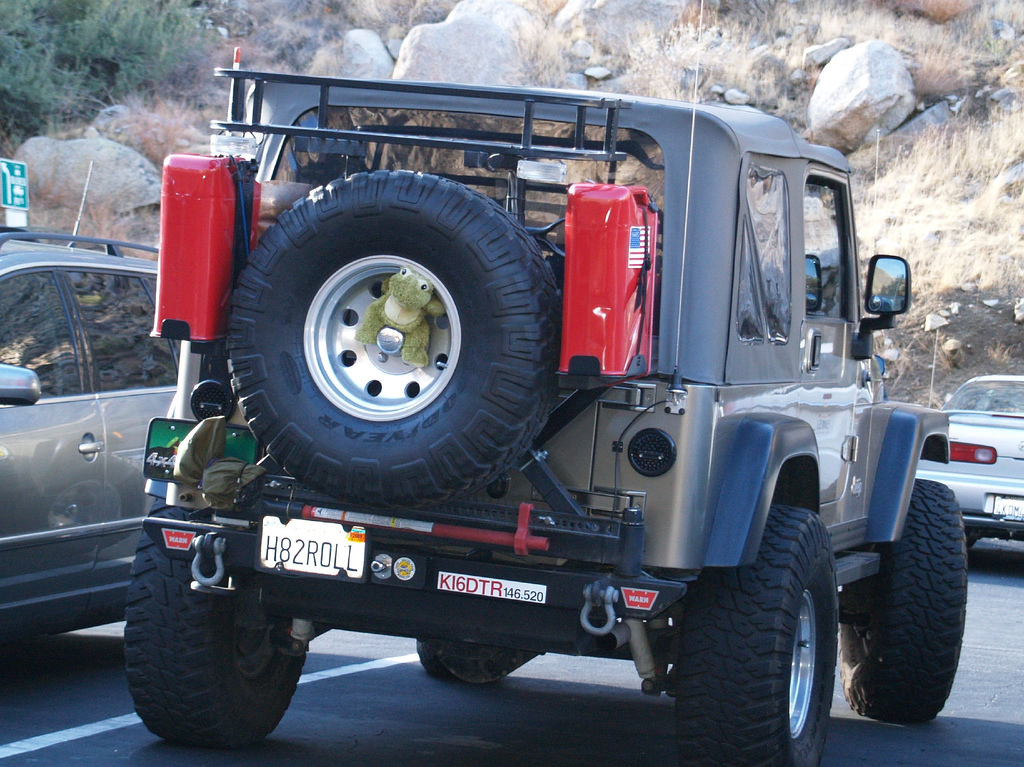For the past decade car makers have been trying to shrink the size of the spare wheel and tyre, or eradicate the assembly entirely, but there are serious issues with this process, Allan Whiting asserts.
Vehicle makers hate having to fit spare wheels and tyres to their new cars. As wheels become larger in diameter and tyres fatter, the spare takes up an increasing amount of space adding weight and cost.
This space issue has been ‘solved’ by some car makers’ fitting the so-called ‘temporary use spare tyre (TUTS), instead of a full-sized spare wheel and tyre. As its name suggests this assembly is intended purely as a limp-home device. I’ve had the misfortune to use one of these ‘substitutes’ when I was evaluating a loaded VW Touareg on graded, log-truck gravel roads near Lithgow in NSW and scored a stone-puncture.
I fitted the supplied TUTS that looked more suited to a lightweight motorcycle. The temporary spare felt like it was made from solid rubber and the VW’s traction control worked overtime trying to grip the loose gravel. I couldn’t go any quicker than around 10km/h or my teeth started to chatter. I reached the bitumen and crept back to Sydney, averaging around 60km/h.
At the end of this 130km drive the temporary spare was totally stuffed – and so was I. (TUTS makers claim up to 450km driving range, but that wasn’t my experience.) Imagine if this had happened west of the Great Divide – hundreds of kilometres away from tyre service. The space saving from using a TUTS in most vehicles is minimal. I’ve measured the spare wheel wells of many different vehicles and the loss in boot or cargo area floor height is usually only 50-75mm. Is that incremental cargo volume worth the TUTS risk?
Run-flat tyres
The growing trend fit run-flat tyres is being led by up-market European brands under the rationale of eradicating safety risks in roadside wheel changing. Outside highly-populated areas, it’s a problem. Here’s an actual run-flat tyre experience, from an acquaintance of mine:
“On a trip from Melbourne to Canberra a warning light came on indicating a deflating tyre. (The BMW has run-flat tyres, so there isn’t a spare, a jack, or wheel brace.)
“On checking the handbook we were advised that we could continue driving on the flattish tyre for up to 150km, if we kept below 80km/h.
“The tyre looked OK, if a bit saggy, but the stiffened sidewalls were doing their job as we continued for the next 10 kilometres, keeping the speed below 70km/h.
“All of a sudden, the tyre shredded completely. The upshot of that was a tow to the nearest small town and the occupants and tyre then making a 280 round trip to Canberra for a new tyre.
“The run flat technology may work in Europe, but with Australia’s distances between places, it proved a liability.”
I’d suggest anyone who buys a new car should check that it comes with a full-sized spare wheel and tyre that exactly matches the four on the road. If it doesn’t – don’t buy it.
Run-flat tyre tech
Run-flat tyres have been used successfully for many years on military and security vehicles, where the advantage is obvious: a blown-out tyre stays on the wheel and allows the vehicle to drive away from danger. For passenger car makers, the main attraction of the run-flat tyre ( apart eliminating the spare wheel and tyre) is that the driver can limp to a repair shop rather than changing a wheel on the side of a busy road.
Run-flat designs are mainly the stiff sidewall type and the ring-supported type. The former has stronger than normal sidewalls and heavier bead sections, so the tyre retains almost an inflated shape at zero pressure. The latter has an internal ring to support the tread of the deflated tyre and to fill the ‘well’ in the wheel rim, so the tyre can’t run off the rim.
Because both run flat types look almost normal when deflated they’re mounted only on new vehicles that come with on-board tyre pressure monitoring systems.
The door opened for run-flats in the USA when that country mandated tyre pressure monitoring on all new vehicles from 2007. The permitted driving speed and distance on a deflated run-flat shortens dramatically if the vehicle is heavily loaded or is being operated on unpaved surfaces.
But tyre dealers are scarce in rural Australia and a 50km -160km range is little comfort. Further complications are the need for special tyre handling equipment for the ring-supported type. If a run-flat fails during a 400km drive to the nearest service centre – a tangible distance – you’re marooned. Consider a two-day wait while for a new wheel and tyre to get to you. And budget at least a $1000, plus a motel. In the USA car owners have litigated for compensation for the higher ownership cost of run-flats.
Comment below to have your say on this story.
If you have a news story or tip-off, get in touch at editorial@governmentnews.com.au.
Sign up to the Government News newsletter

